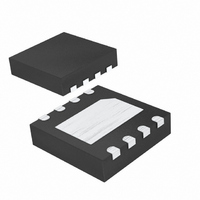MAX1935ETA15+T Maxim Integrated Products, MAX1935ETA15+T Datasheet - Page 7

MAX1935ETA15+T
Manufacturer Part Number
MAX1935ETA15+T
Description
IC REG LINEAR 500MA 8-TDFN
Manufacturer
Maxim Integrated Products
Datasheet
1.MAX1935ETAT.pdf
(10 pages)
Specifications of MAX1935ETA15+T
Regulator Topology
Positive Fixed
Voltage - Output
1.5V
Voltage - Input
2.25 ~ 5.5 V
Number Of Regulators
1
Current - Output
500mA (Min)
Operating Temperature
-40°C ~ 85°C
Mounting Type
Surface Mount
Package / Case
8-TDFN Exposed Pad
Number Of Outputs
1
Polarity
Positive
Input Voltage Max
5.5 V
Output Voltage
1.5 V
Output Type
Fixed
Output Current
500 mA
Line Regulation
0 % / V
Voltage Regulation Accuracy
2.5 %
Maximum Power Dissipation
1.95 W
Maximum Operating Temperature
+ 85 C
Mounting Style
SMD/SMT
Minimum Operating Temperature
- 40 C
Reference Voltage
0.8 V
Lead Free Status / RoHS Status
Lead free / RoHS Compliant
Voltage - Dropout (typical)
-
Current - Limit (min)
-
Lead Free Status / Rohs Status
Lead free / RoHS Compliant
The MAX1935 is a low-dropout, low-quiescent-current
linear regulator. The device supplies loads up to
500mA and is available with preset output voltages. As
illustrated in Figure 1, the MAX1935 includes a 0.8V ref-
erence, error amplifier, P-channel pass transistor, and
internal feedback voltage-divider.
The reference is connected to the error amplifier, which
compares it with the feedback voltage and amplifies
the difference. If the feedback voltage is lower than the
reference voltage, the pass-transistor gate is pulled
lower, which allows more current to pass to the output
increasing the output voltage. If the feedback voltage is
too high, the pass-transistor gate is pulled up, allowing
less current to pass to the output.
The output voltage is fed back through either an internal
resistive voltage-divider connected to OUT or an
external resistor network connected to SET. The dual-
mode comparator examines V
back path. If V
path is used, and the output is regulated to the factory-
preset voltage. Additional blocks include an output
current limiter, thermal sensor, and shutdown logic.
The MAX1935 features a 0.4Ω P-channel MOSFET pass
transistor. Unlike similar designs using PNP pass
transistors, P-channel MOSFETs require no base drive,
which reduces operating current. PNP-based regulators
also waste considerable current in dropout when the
pass transistor saturates, and use high base-drive
currents under large loads. The MAX1935 does not
suffer from these problems.
The MAX1935’s dual-mode operation allows operation
in either a preset voltage mode or an adjustable mode.
Connect SET to GND to select the preset output
voltage. The two-digit part number suffix identifies the
output voltage. For example, the MAX1935ETA33 has a
preset 3.3V output voltage. The output voltage can also
be adjusted by connecting a voltage-divider from OUT
to SET (Figure 2). Select R2 in the 25kΩ to 100kΩ
range. Calculate R1 with the following equation:
where V
to 4.5V.
Drive SHDN low to enter shutdown. During shutdown,
the output is disconnected from the input, and supply
current drops to 0.02µA. When in shutdown, POK pulls
SET
Internal P-Channel Pass Transistor
= 0.8V, and V
R1 = R2 [(V
SET
_______________________________________________________________________________________
is below 35mV, the internal feedback
Detailed Description
Output Voltage Selection
500mA, Low-Voltage Linear Regulator
OUT
OUT
SET
/ V
SET
can range from 0.8V
and selects the feed-
) - 1]
Shutdown
low. The capacitance and load at OUT determine the
rate at which V
high as 6V, regardless of the input and output voltage.
The POK output pulls low when OUT is less than 93% of
the nominal regulation voltage. Once OUT exceeds
93% of the nominal voltage, POK goes high imped-
ance. POK is an open-drain N-channel output. To
obtain a logic voltage output, connect a pullup resistor
from POK to OUT. A 100kΩ resistor works well for most
applications. POK can be used to signal a microcon-
troller (µC), or drive an external LED to indicate power
failure. When the MAX1935 is shutdown, POK is held
low independent of the output voltage. If unused, leave
POK grounded or unconnected.
The MAX1935 monitors and controls the pass transis-
tor’s gate voltage, limiting the output current to 1.4A
(typ). The output can be shorted to ground for an indefi-
nite period of time without damaging the part.
Thermal-overload protection limits total power dissipa-
tion in the MAX1935. When the junction temperature
exceeds T
pass transistor, allowing the device to cool. The thermal
sensor turns the pass transistor on again after the junc-
tion temperature cools by +20°C, resulting in a pulsed
output during continuous thermal-overload conditions.
Thermal-overload protection protects the MAX1935 in
the event of fault conditions. For continuous operation,
do not exceed the absolute maximum junction-temper-
ature rating of T
The MAX1935’s maximum power dissipation depends
on the thermal resistance of the IC package and circuit
board, the temperature difference between the die
junction and ambient air, and the rate of air flow. The
power dissipated in the device is P = I
V
1.95W or:
where T
MAX1935 die junction and the surrounding air, θ
the thermal resistance from the junction to the case, and
θ
PC board, copper traces, and other materials to the sur-
rounding air. The MAX1935 package features an
exposed thermal pad on its underside. This pad lowers
the package’s thermal resistance by providing
CA
OUT
Operating Region and Power Dissipation
is the thermal resistance from the case through the
). The maximum allowed power dissipation is
J
- T
PMAX = (T
J
A
= +170°C, a thermal sensor turns off the
is the temperature difference between the
J
OUT
= +150°C.
Thermal-Overload Protection
J(MAX)
decays. SHDN can be pulled as
in Tiny QFN
- T
A
) / (θ
Power-OK Output
JC
Current Limit
+ θ
OUT
CA
)
✕
(V
JC
IN
is
7
-










